Distributed Optimal Power Flow of AC/DC Interconnected Power Grid Using Synchronous ADMM Zijun Liang1, Shunjiang Lin1and Mingbo Liu1 1School of Electric Power, South China University of Technology, Guangzhou 510640, Guangdong Province, China scut_ep_lzj@163.com Abstract. Distributed optimal power flow (OPF) is of great importance and challenge to AC/DC interconnected power grid with different dispatching centres, considering the security and privacy of information transmission. In this paper, a fully distributed algorithm for OPF problem of AC/DC interconnected power grid called synchronous ADMM is proposed, and it requires no form of central controller. The algorithm is based on the fundamental alternating direction multiplier method (ADMM), by using the average value of boundary variables of adjacent regions obtained from current iteration as the reference values of both regions for next iteration, which realizes the parallel computation among different regions. The algorithm is tested with the IEEE 11-bus AC/DC interconnected power grid, and by comparing the results with centralized algorithm, we find it nearly no differences, and its correctness and effectiveness can be validated. 1. Introduction With the rapid development of power market and power economy, the engineering application of the optimal power flow (OPF) in power system appears to be more important. The most commonly used algorithms for solving OPF problem includes nonlinear programming (NLP), sequential quadratic programming (SQP) and interior point method (IPM). IPM has good convergence and is suitable for solving OPF problem [1-2], includes the OPF problem of AC/DC interconnected power grid [3]. With the increasing interaction between adjacent areas, great challenges are brought to the traditional centralized computing framework. And fully decentralized algorithm for solving OPF problem becomes more appropriate for computing framework. The original research of distributed OPF can trace back to Balho H. Kim and Ross Baldick’s research on coarse-grained distributed OPF [4]. After years of unremitting efforts, algorithms aiming to solve distributed OPF problem are now fruitful, such as the auxiliary problem principle (APP) [5], semi definite programming (SDP) [6] and approximate Newton directions algorithm [7]. According to Stephen Boyd’s research [8], the fundamental alternating direction multiplier method combines the decomposability of the dual iteration method and the superior convergence of lagrangian multiplier method. In this paper we wish to achieve a new algorithm which is fully distributed, requiring no form of central controller and applicable to AC/DC interconnected power grid. The proposed algorithm is improved on the fundamental alternating direction multiplier method. As a region-based optimization algorithm, only a limited amount of information is exchanged between adjacent regions, therefore, assuring privacy and security during information transmission. �
2. Distributed optimal power flow statement of AC/DC interconnected power grid 2.1. General description of OPF problem The OPF problem in power system can be described as to obtain the optimal solution by optimizing the control variables based on satisfaction of all the equality and inequality constraints, while the network structure and parameters are given. Therefore, the OPF problem can be written in the form min()()0..()fxhxstggxg (1) Variable x includes state variable and control variable. Objective function f(x) is variable according to computing demand. For example we choose coal consumption costs of thermal power generations of the whole system to be our objective function 21()min()GniGiiGiiifxaPbPc (2) Set nG includes all the thermal power units of the whole system. Variable ai, bi and ci represents respectively quadratic coefficient, monomial coefficient and constant coefficient of coal consumption characteristic curve of generator at node i. Variable PGi represents active power of generator at node i. Equality constraint equation h(x) basically is flow equation of AC/DC interconnected power grid [3]. Inequality constraint equation g(x) includes bound of active and reactive power output of each generator, voltage range of each node and range of DC parameters. In conclusion, the OPF problem is a complicated nonlinear programming problem. 2.2. Network partition of distributed OPF Instead of partitioning based on nodes, we choose to partition the network based on transmission lines. Take the two-region grid partitioning as an example (Figure 1). The grid is partitioned by AC power transmission line a-b, which means creating node a(2) as the replication of original node a(1) in region 2 and creating node b(2) as the replication of original node b(1) in region 1. Each node in the network contains four variables, including voltage amplitude, voltage phase angle, active power and reactive power. In order to satisfy the boundary coupling constraint of distributed OPF, we need to guarantee the following four equations (1)(2)(1)(2)(1)(2)(1)(2),,,aaaabbbbVVVV (3) Only when the voltage amplitude and phase angle of the replicate node are same as the original node, can we assure the line transmission power in two regions are identical. In which case, the active and reactive power of both original and replicate node will be identical, too. Region 1Region 2 z区域a区域baba(2)a(1)b(2)b(1) Figure 1. Example of grid partitioning into two regions by AC power transmission line. And the AC/DC interconnected grid needs to consider partitioning by DC power transmission line (Figure 2), nodes of which contains DC voltage, DC current and DC power three variables. Likewise, in order to satisfy the boundary coupling constraint, we need to guarantee (1)(2)(1)(2),drdrdidiUUUU (4) �
In this way, DC current can be assured identical in both regions. So is the DC power. ·AC·ACRectifierInverter··RectifierACRegion 1Region 2InverterACUdrUdrUdrUdiUdiUdiIdIdId Figure 2. Example of grid partitioning into two regions by DC power transmission line. Based on the network partition, the distributed OPF model can be described as follows: min ()()0,..(), kkkRkkkkkkkkBBfhxkRstkRxxxggxg (5) Where region k and region k are adjacent. 3. Introduction and improvement on ADMM 3.1. Overview on ADMM The fundamental form can be written as min ()()s.t. fxgzxz (6) The lagrangian equation we construct can be written as 22(,,)()()()(/2)TLxzyfxgzyxzxz (7) And the iterative process is as follows 212111111argmin(()()()/2)argmin(()()()/2)()ttTttttTttttttxfxyxzxzzgzyxzxzyyxz (8) The original variables x and z iterate alternately during the iterative process, so even f(x) and g(z) are both separable, ADMM can manage to carry on optimization. The convergence of ADMM is based on the following assumption, f(x) and g(z) are closed and correct convex function, the lagrangian equation has saddle point. In this case, ADMM can converge at the only stable point. Its convergence criterion can be written as tttxz (9) When the criterion meets the precise range [10-3,10-5], the optimal solution is achieved. 3.2. Improvement on ADMM The fundamental ADMM is based on Gauss-Seidel method, which leads to its slow convergence speed and poor convergence performance. In order to obtain satisfactory convergence effect, a large amount of adjustment need testing on the penalty factor . More importantly, ADMM fails realizing parallel computing among regions, which means the current region can operate the optimization calculation only after the adjacent regions finish their own process and transfer the latest boundary variables out. Hence, improvements are made as follow. �
Firstly, because of 222()()/2/2(1/)(1/2)tTtttttyxzxzxzyy (10) On the right side of (10), the last item is constant value, which can be omitted during optimization process. So we can rewrite (8) in a compact form 21211111argmin(()/2)argmin(()/2)()ttttttttttxfxxzuzgzzxuuuxz (11) while (1/)ttuy (12) Then we use 12(,)()/2ttttttKKhxzxz (13) to replace the fixed value in the boundary coupling constraint of iteration formula. In this way, both regions can operate the optimization synchronously only taking the values of boundary variables obtained in last iteration into consideration. So we obtain the improved form of (11) as 21111111112122111222argmin(())2[]argmin(())2[]ttttttttttttttxfxxKuuuxKzgzzKuuuzK (14) with 12,ttttuuuu (15) Considering the convergence criterion of fundamental ADMM, feasibility of our improvement is based on the following equation when it comes to convergence (,)tttthxzxz (16) Obviously, the design of (13) is eligible so we obtain an improved feasible distributed algorithm called synchronous alternating direction method of multipliers (SADMM). 3.3. Application of SADMM The main frame of the SADMM algorithm has been mentioned above, though, some specific parameters need confirming before applying. For each node i in the network, Ni identifies the set of neighbors to node i (including node i itself). If a network with N nodes need partitioning into R regions, we can define 1,....kRR and also we define Hk as the set of neighbors to all the nodes in region k. And the penalty factor ρ can be written as ,,,,,,,, jjjhkjhkjkhhkM (17) Where jkkjHMR[9-10]. When 2jM, it means information can be exchanged between region h and region k. And we use the following expression to calculate the value of ρ ,,/(M1), ,jhkhkjjwwhkM (18) Global constant is selected for better convergence, which is positively related to number of boundary transmission lines. Regional constant kw is a weight associated with region kR. 1, /(1/)(1/),,kkhkhkRwRwwSShkR (19) �
The value of the weight kw is linked to generating capacity in region k. The more the generating capacity is, the stronger the self-adjustment capability is, so the smaller the value of kw is. All in all, the algorithm procedure is as follows 1) Initializing 00,,,,,kihjkhxziHjH and 00,,0kihjuu, calculating 10002,,1,....RKKKRR 2) Updating variables using (14) and (13) 3) Going back to step 2) if convergence criterion is not satisfied 4. Simulation results 4.1. Example introduction This paper test the proposed SADMM algorithm with an AC/DC interconnected power grid based on the IEEE 11-bus grid (Figure 3). The example has four generators and two loads. The AC power transmission line between node 7 and node 9 is transformed into DC power transmission line. 1243876591011 Figure 3. AC/DC interconnected power grid based on the IEEE 11-bus grid. We partition the network into two regions with AC transmission line 7-8 and DC transmission line 7-9. As the generator capacities in two regions are nearly equal, we have 121ww and we set 4000. Also, we set a=3, b=0.01 and c=40 for all the generators. 4.2. Simulation results and comparison We operate the test on the simulation platform GAMS and choose the objective function as the coal consumption costs of thermal power generations of the whole system. And the acceptable error precision is set to 10-4. Hence, the distributed OPF results and its comparison with centralized optimization result are shown as follow. Table 1. Comparison with centralized optimization result. Items Centralized result Distributed result Error Objective function 812.777 812.777 0.000 Total power output 27.821 27.821 0.000 Active Power output of each generator P1 3.004 3.004 0.000 P2 9.000 9.000 0.000 P3 6.817 6.817 0.000 P4 9.000 9.000 0.000 Reactive Power output of each generator Q1 -0.043 -0.043 0.000 Q2 0.657 0.657 0.000 Q3 0.540 0.540 0.000 Q4 0.957 0.957 0.000 DC parameters Udr 0.990 0.990 0.000 Udi 0.964 0.964 0.000 Id 0.900 0.900 0.000 kdr 1.000 1.000 0.000 kdi 1.020 1.019 0.001 �
The centralized algorithm we use is an IPM-like method. As is shown in Table 1, errors of the objective function and power output are definitely zero. Results of DC parameters are found nearly identical. Moreover, we make the further comparison of voltage at every node, finding no error at all. The high accuracy we reached is far below any practical requirement, which certifies the validity of the proposed distributed method. 5. Conclusion In this paper, a new approach for solving distributed OPF of AC/DC interconnected power grid is proposed, based on the fundamental alternating direction of multipliers method. The proposed algorithm is fully distributed, requiring no form of central controller except for clock synchronization for paralleled calculation in different regions. Also, only voltage of boundary nodes is exchanged with adjacent regions, assuring security and privacy of information. We test the new approach in an AC/DC interconnected power grid and the results validate the feasibility and validity of the proposed distributed method. However, a lot of problems, especially related to convergence, are still waiting to be solved and improved. The choice of global constant has significant impact on the convergence speed. And the way of region partitioning, involved with number of transmission line and power output balance, is influential too. What’s more, less information exchange and faster convergence speed is completely contrary, so we can only reach a relative balance based on our requirement. References [1] Mingbo Liu, Min Xie, Weixing Zhao. Optimal power flow calculation for large-scale power grid. [M] Beijing. Science press. 2010. 1-61 [2] Xifan Wang, Wanliang Fang, Zhengchun Du. Modern power system analysis. [M] Beijing. Science press. 2003. 166-198 [3] Qing Li, Mingbo Liu, Huiye Liu. Piecewise Normalized Normal Constraint Method Applied to Minimization of Voltage Deviation and Active Power Loss in an AC–DC Hybrid Power System. IEEE Transactions on Power Systems, Vol. 30, pp. 1243-1251, Aug 2014. [4] Balho H. Kim and Ross Baldick. Coarse-Grained Distributed Optimal Power Flow. IEEE Transactions on Power Systems, Vol. 12, No. 2, May 1997 [5] R. Baldick, B. H. Kim, C. Chase, et al, “A fast distributed implementation of optimal power flow,” IEEE Trans. Power Syst., vol. 14, no. 3, pp. 858-864, Aug. 1999 [6] A. Y. S. Lam, B. Zhang, and D. Tse, Distributed Algorithms for Optimal Power Flow Problem, Mathematics, Vol. 22, No. 1, pp. 430–437 2011 [7] A. J. Conejo, F. J. Nogales, and F. J. Prieto, A decomposition procedure based on approximate Newton directions, Math. Program., vol. 93, pp. 495–515, 2002. [8] Stephen Boyd, Neal Parikh, Eric Chu et al. Distributed optimization and statistical learning via the alternating direction method of multipliers [J]. Foundations and Trends in Machine Learning,2010,3(1):1-122 [9] Tomaso Erseghe. Distributed optimal power flow using ADMM [J]. IEEE Transactions on Power Systems,2014, 29(5):2370-2380 [10] T. Erseghe, A distributed and scalable processing method based upon ADMM, IEEE Signal Process. Lett., vol. 19, no. 9, pp. 563–566, Sep. 2012 �
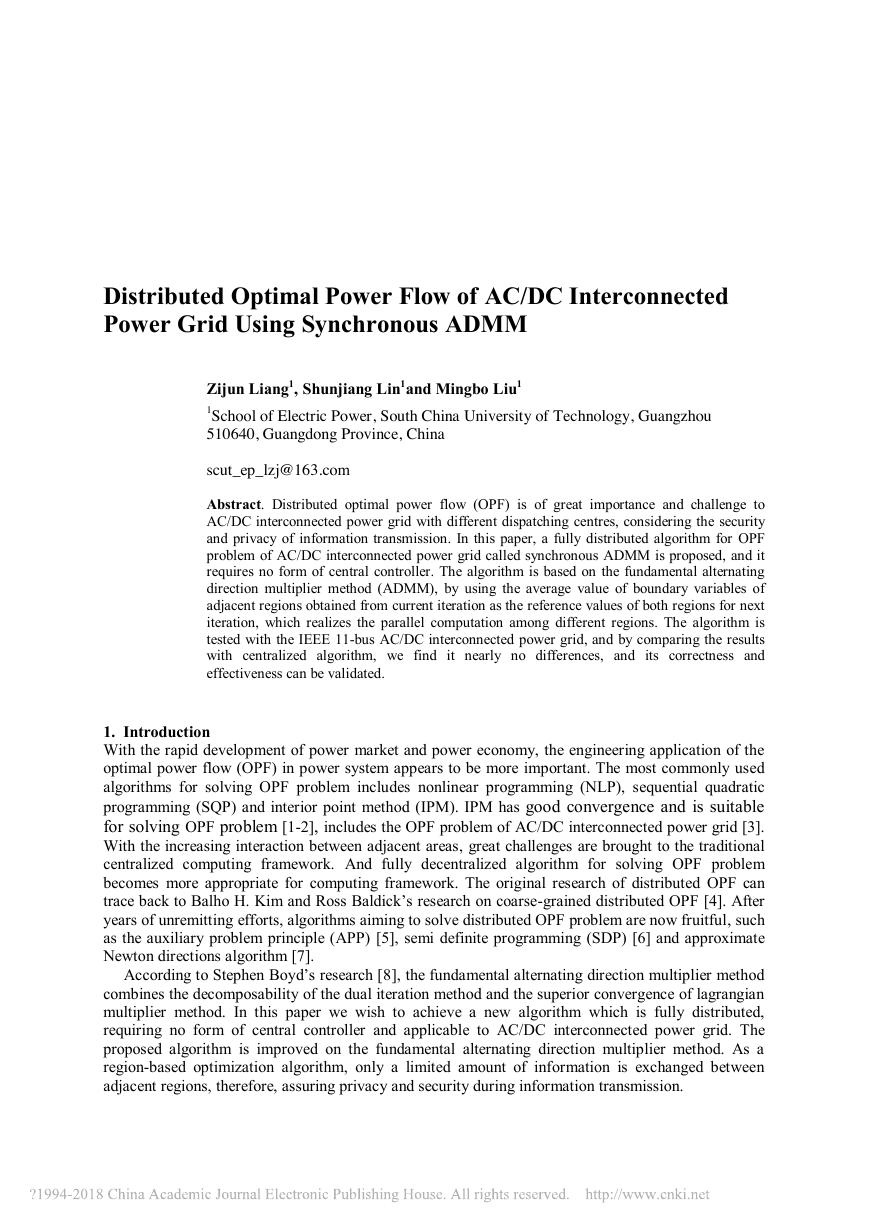
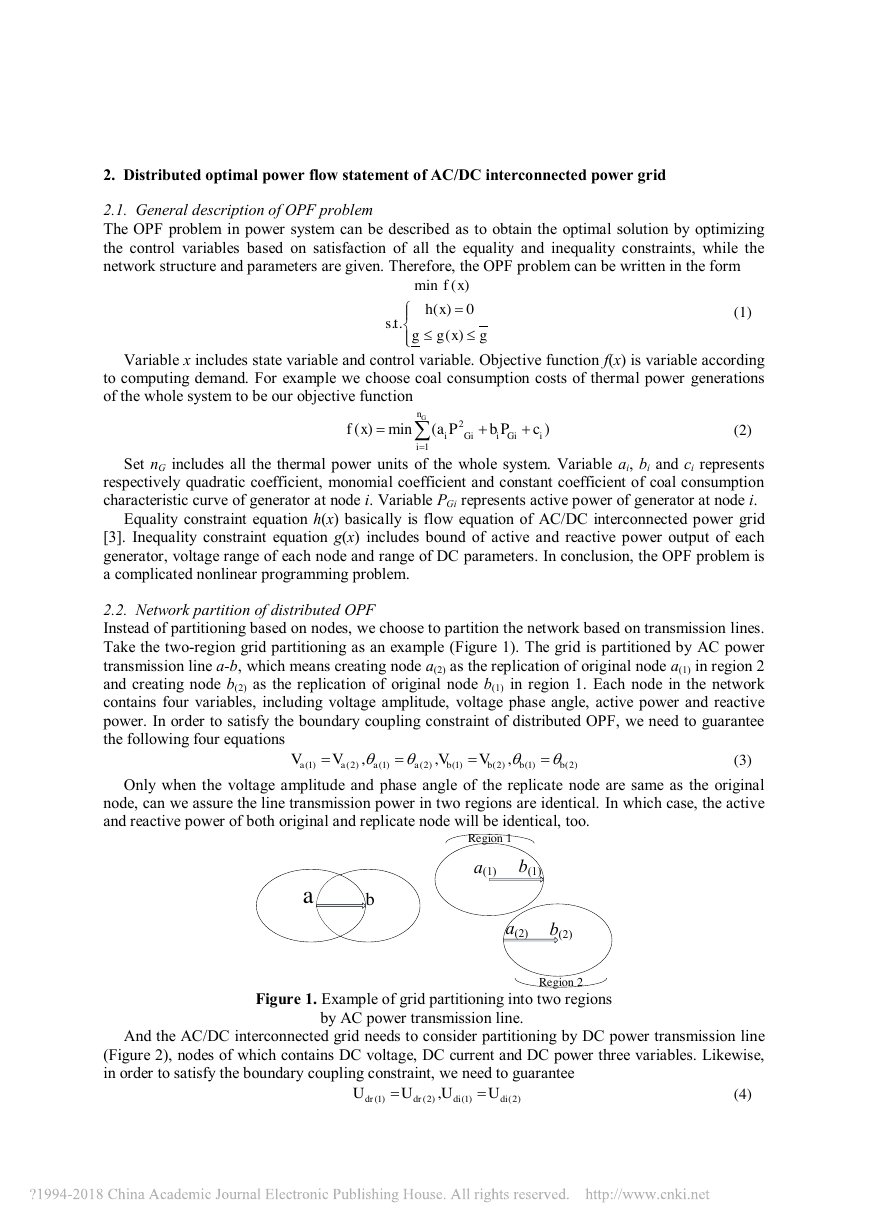
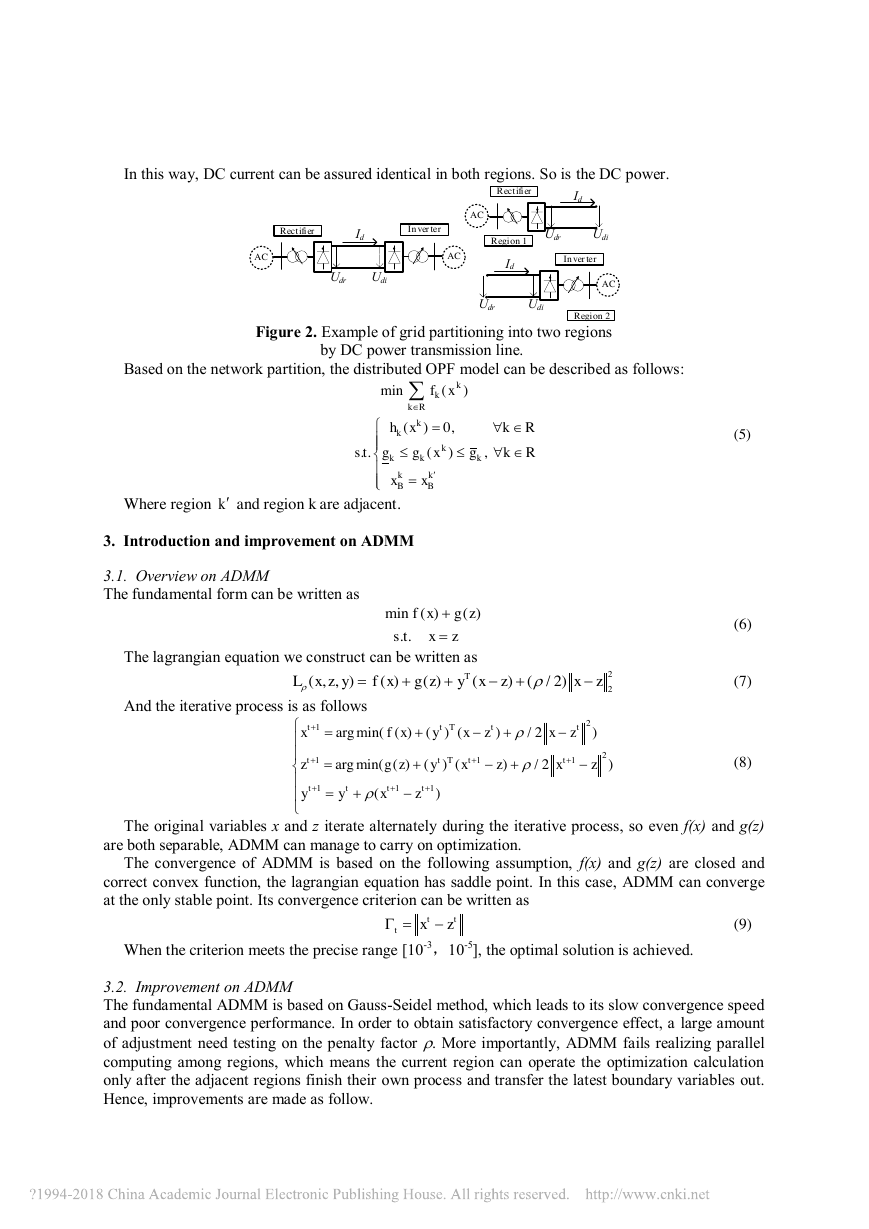
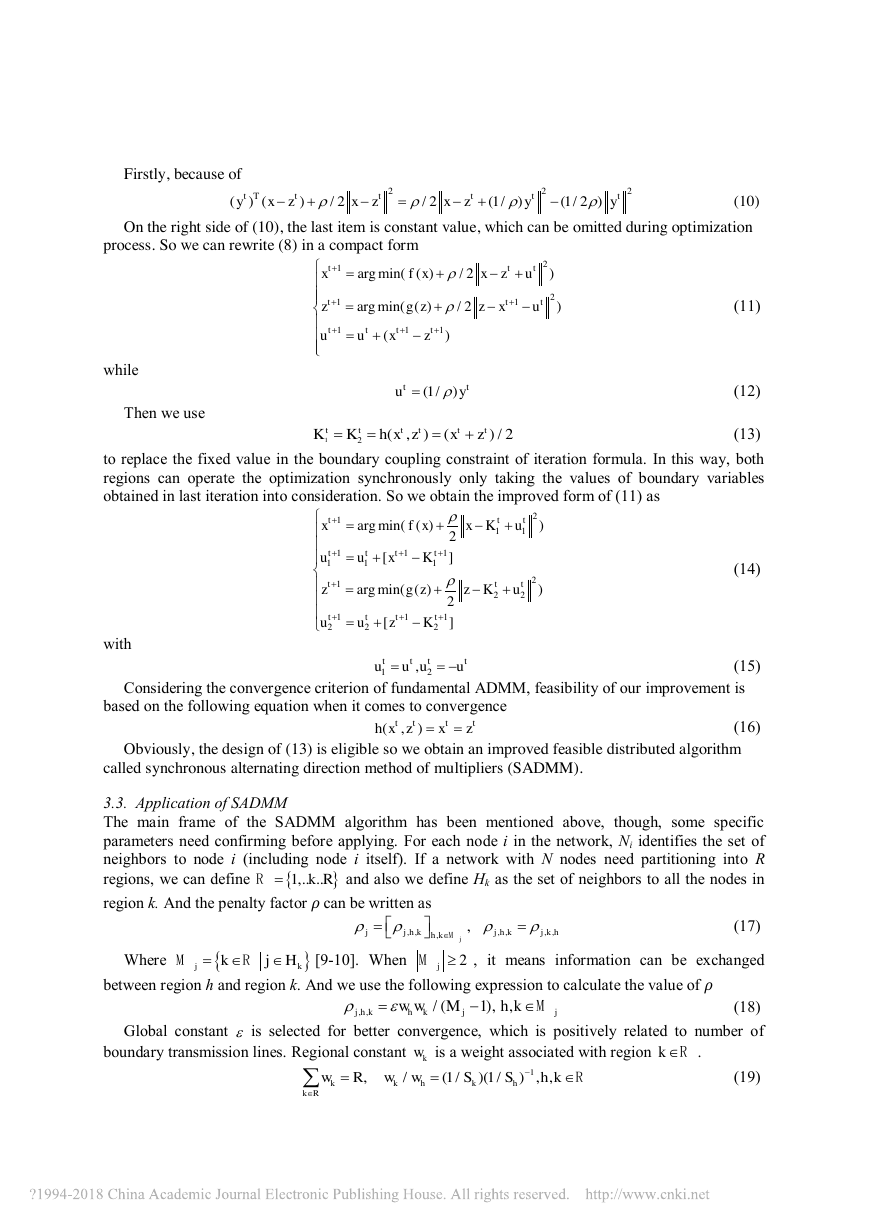
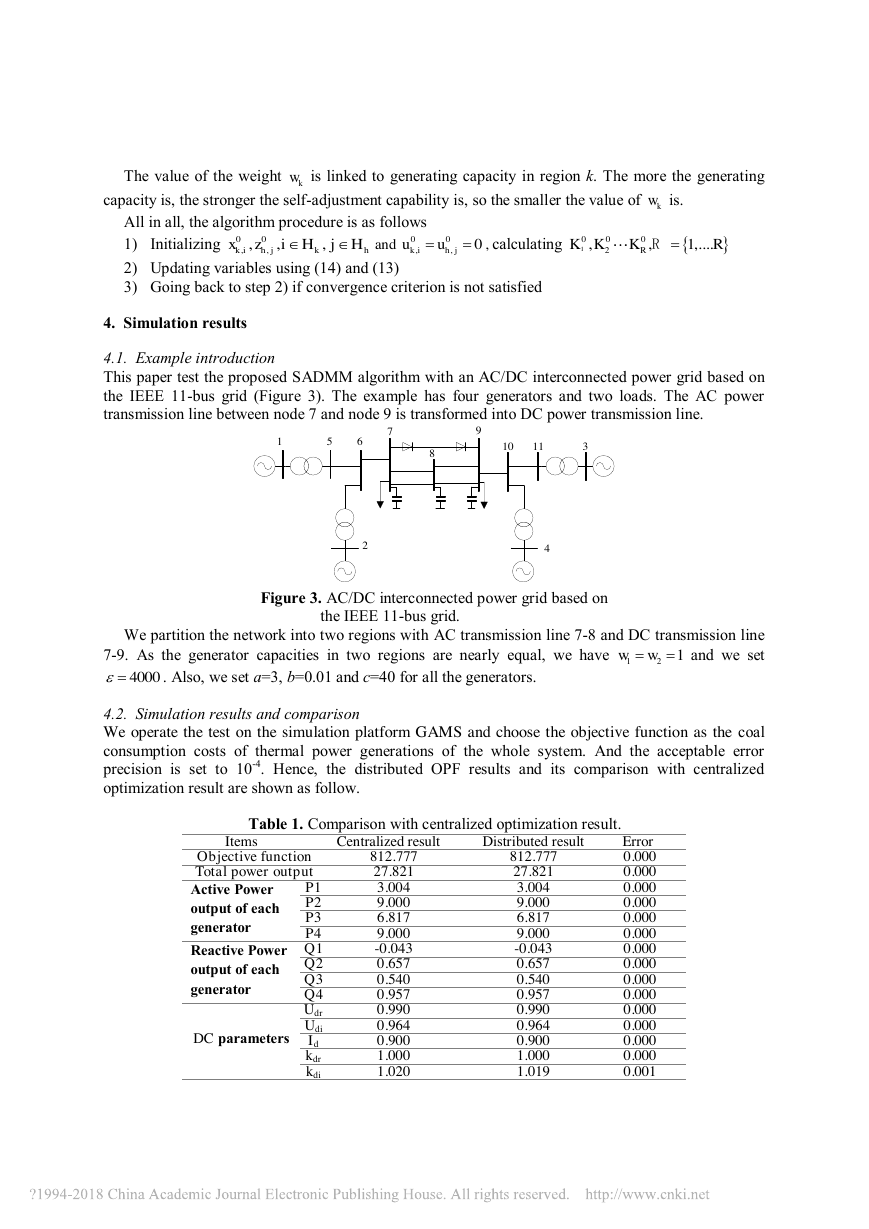
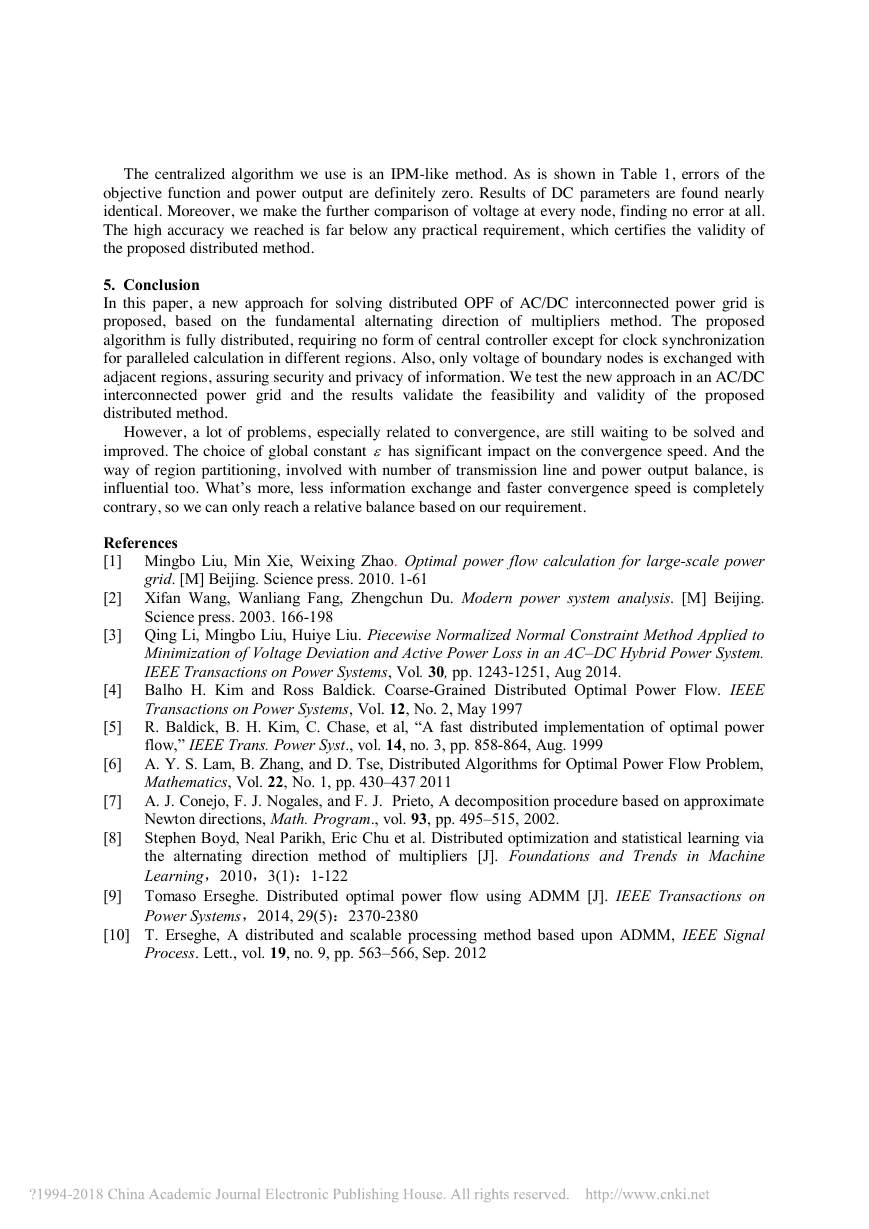






 2023年江西萍乡中考道德与法治真题及答案.doc
2023年江西萍乡中考道德与法治真题及答案.doc 2012年重庆南川中考生物真题及答案.doc
2012年重庆南川中考生物真题及答案.doc 2013年江西师范大学地理学综合及文艺理论基础考研真题.doc
2013年江西师范大学地理学综合及文艺理论基础考研真题.doc 2020年四川甘孜小升初语文真题及答案I卷.doc
2020年四川甘孜小升初语文真题及答案I卷.doc 2020年注册岩土工程师专业基础考试真题及答案.doc
2020年注册岩土工程师专业基础考试真题及答案.doc 2023-2024学年福建省厦门市九年级上学期数学月考试题及答案.doc
2023-2024学年福建省厦门市九年级上学期数学月考试题及答案.doc 2021-2022学年辽宁省沈阳市大东区九年级上学期语文期末试题及答案.doc
2021-2022学年辽宁省沈阳市大东区九年级上学期语文期末试题及答案.doc 2022-2023学年北京东城区初三第一学期物理期末试卷及答案.doc
2022-2023学年北京东城区初三第一学期物理期末试卷及答案.doc 2018上半年江西教师资格初中地理学科知识与教学能力真题及答案.doc
2018上半年江西教师资格初中地理学科知识与教学能力真题及答案.doc 2012年河北国家公务员申论考试真题及答案-省级.doc
2012年河北国家公务员申论考试真题及答案-省级.doc 2020-2021学年江苏省扬州市江都区邵樊片九年级上学期数学第一次质量检测试题及答案.doc
2020-2021学年江苏省扬州市江都区邵樊片九年级上学期数学第一次质量检测试题及答案.doc 2022下半年黑龙江教师资格证中学综合素质真题及答案.doc
2022下半年黑龙江教师资格证中学综合素质真题及答案.doc